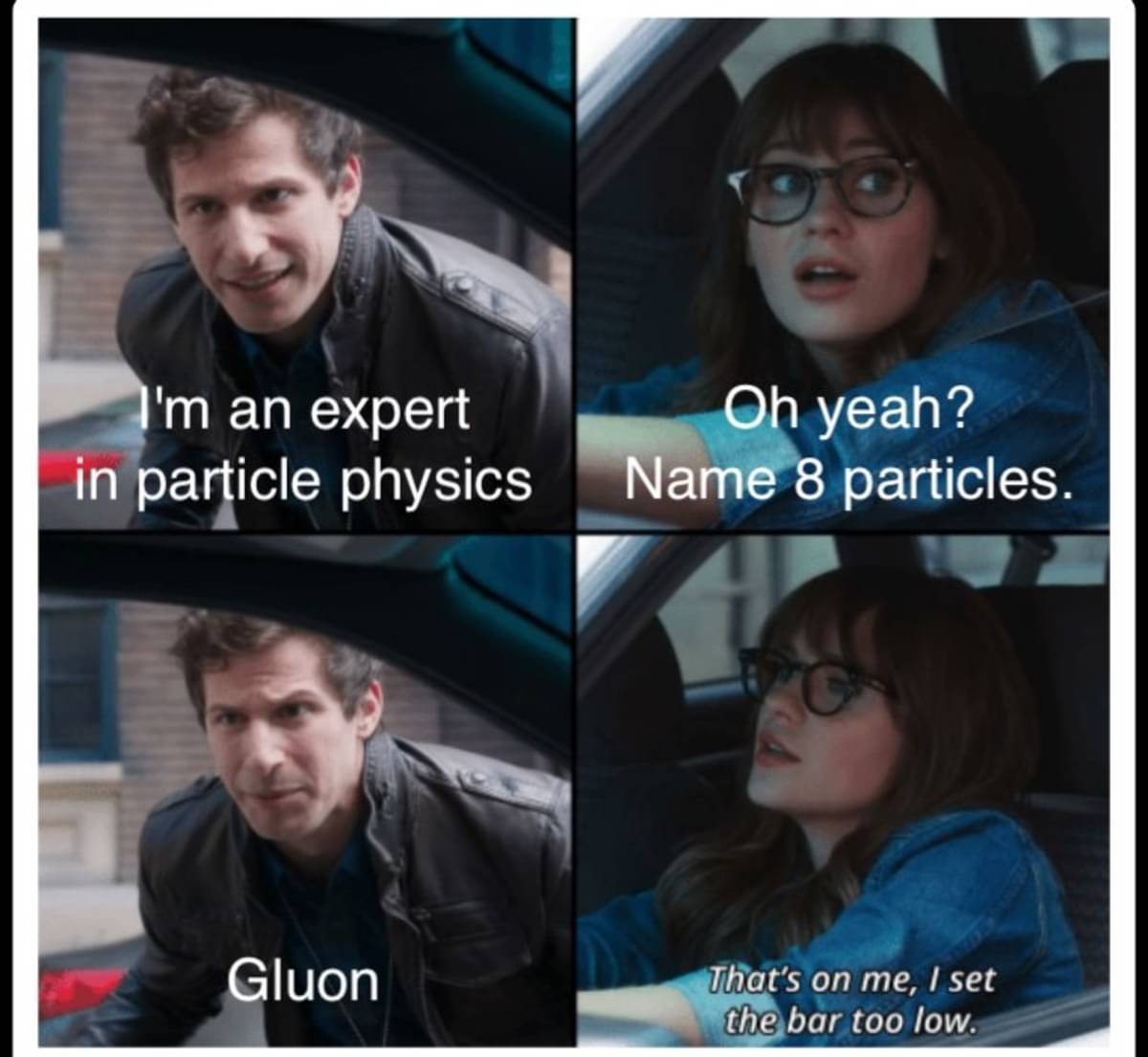this post was submitted on 30 May 2024
334 points (98.5% liked)
Science Memes
9989 readers
1460 users here now
Welcome to c/science_memes @ Mander.xyz!
A place for majestic STEMLORD peacocking, as well as memes about the realities of working in a lab.

Rules
- Don't throw mud. Behave like an intellectual and remember the human.
- Keep it rooted (on topic).
- No spam.
- Infographics welcome, get schooled.
Sister Communities
Science and Research
Biology and Life Sciences
- [email protected]
- [email protected]
- [email protected]
- [email protected]
- [email protected]
- [email protected]
- [email protected]
- [email protected]
- [email protected]
- [email protected]
- [email protected]
- [email protected]
- [email protected]
- [email protected]
- [email protected]
- [email protected]
- [email protected]
- [email protected]
- [email protected]
- [email protected]
- [email protected]
- [email protected]
- [email protected]
- [email protected]
- !reptiles and [email protected]
Physical Sciences
- [email protected]
- [email protected]
- [email protected]
- [email protected]
- [email protected]
- [email protected]
- [email protected]
- [email protected]
- [email protected]
Humanities and Social Sciences
Practical and Applied Sciences
- !exercise-and [email protected]
- [email protected]
- !self [email protected]
- [email protected]
- [email protected]
- [email protected]
Memes
Miscellaneous
founded 2 years ago
MODERATORS
you are viewing a single comment's thread
view the rest of the comments
view the rest of the comments

I dont get it?
I found this after a Google: https://math.ucr.edu/home/baez/physics/ParticleAndNuclear/gluons.html
There are 8 types of gluon particles.
Sounds about right
Physicists:
Also Physicists: 85% of the universe’ mass is missing!!!
Those missing do interact on things, we just don't know what they are. That's why we know they're missing.
From Wikipedia:
Glad I could help, lol
thank you!
All of this is just going off checking Wikipedia, so it could be wrong. Gluons are a type of particle that can have nine different "color states" depending on the quarks and anti-quarks that comprise them (despite the name, it has nothing to do with literal color). These states are made up of red, green, and blue for quarks, and anti-red, anti-green, and anti-blue for anti-quarks. Depending on the combinations of quarks and anti-quarks, the color state of gluons listed something like "red-antigreen" as "rg", with the "g" having a line over it to show it's anti-green, not green. Since you can have a color matched with the anti-version of its color, like I said earlier, you get 9 potential color states.
Then, of those 9 color states, you have combinations of two gluons of different types of states that combine. If you have a strong, stable version of this state, it's called a color state singlet. Particles like protons have this state, and it allows them to interact with other particles that also have color singlets. However, gluons can't interact at long range, that means they also can't hold a color singlet.
So, that leaves 8 potential color state couplets that can be formed. I have no idea why there's only 8 valid arrangements of those 9 couplets that aren't a stable singlet, but apparently you can only get 8.
Also tagging @[email protected] because I don't think they'd get notified.
Edit: Sorry for the reply after it got answered. There was nothing when I started and it just took a while to figure it out.
There are 8 varieties of gluons, the subatomic particles that exchange the strong force between quarks. The person answered with one word that more or less satisfied the 8 particle requirement. I think that's the joke, at least
Commenting to get the notification if somebody answears
k
I’m Ron Burgundy?